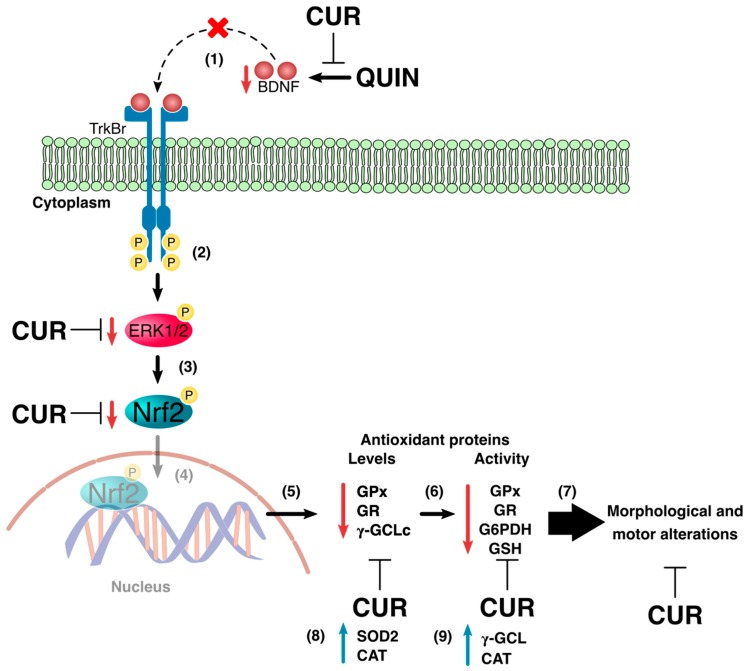Figure 9.
Curcumin (CUR) administration protected brain tissue against the damage induced by quinolinic acid (QUIN). QUIN administration decreased the protein levels of the brain-derived neurotropic factor (BDNF) on day 7, preventing the stimulation of its receptor the tropomyosin receptor kinase-B (TrkBr) (1). The decrease in TrkBr signaling avoided the protein extracellular signal-regulated kinase-1/2 (ERK1/2) activation (2) and consequently, the nuclear factor erythroid 2 related factor 2 (Nrf2) accumulated (3). This allowed for Nrf2 to be translocated into the nucleus (diffuse area) (4). The decrease in Nrf2 levels diminished the protein levels of glutathione peroxidase (GPx), glutathione reductase (GR) and γ-glutamylcysteine ligase catalytic subunit (γ-GCLc) (5), and the enzyme activity of GPx, GR, and glucose-6-phosphate dehydrogenase (G6PDH), as well as glutathione (GSH) levels (6), inducing cellular damage and motor alterations (7). Finally, QUIN injection increased superoxide dismutase 2 (SOD2) and CAT levels (8), and the γ-GCL and CAT activities (9). On the other hand, CUR treatment 24 h after QUIN injection prevented the decrease in BDNF levels, avoiding the reduction of ERK1/2 activation and Nrf2 stabilization and its nuclear translocation and activation, restoring the levels and the activity of antioxidant enzymes and GSH levels, improving morphological and motor alteration induced by QUIN.

